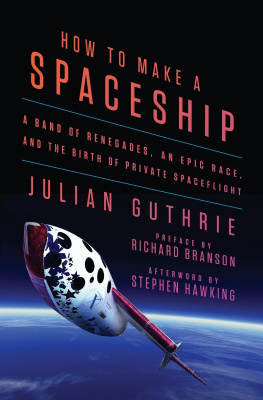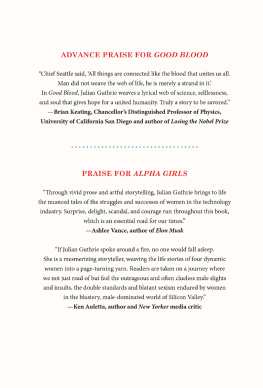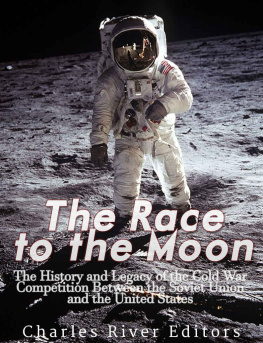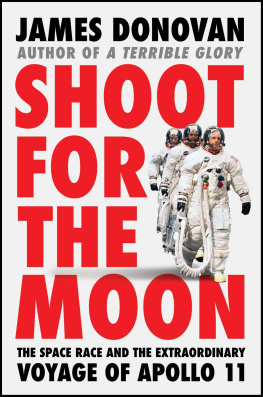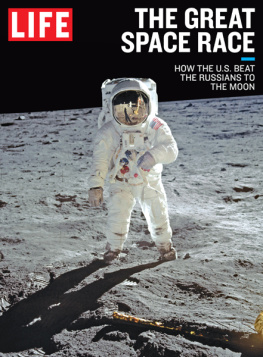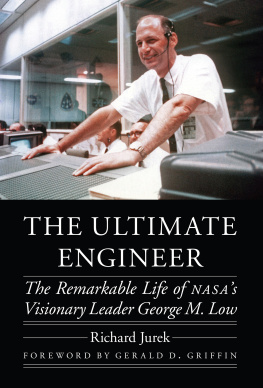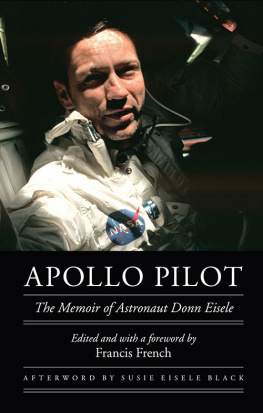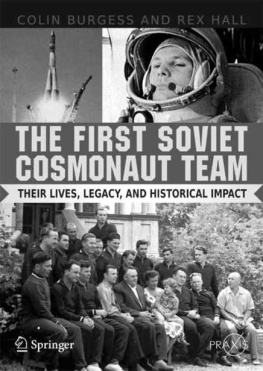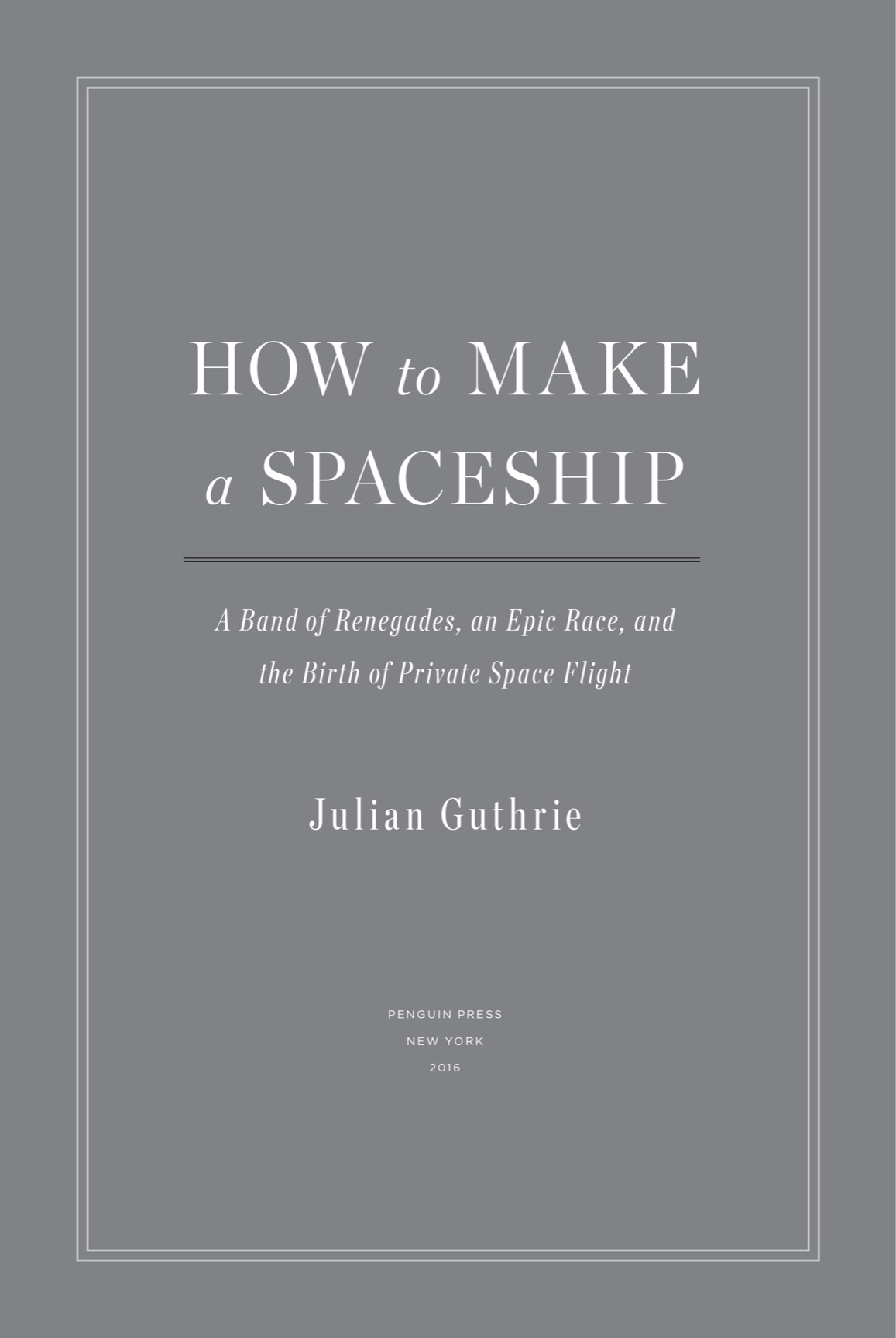Penguin supports copyright. Copyright fuels creativity, encourages diverse voices, promotes free speech, and creates a vibrant culture. Thank you for buying an authorized edition of this book and for complying with copyright laws by not reproducing, scanning, or distributing any part of it in any form without permission. You are supporting writers and allowing Penguin to continue to publish books for every reader.
Foreword
by Richard Branson
P rizes have spurred great milestones and launched industries. The British governments Longitude Prize, offered in 1714, ended up saving both sailors lives and ships. I was already a believer that prizes can make an incredible difference when Peter Diamandis came to see me about funding his $10 million XPRIZE. As Peter shared his idea about a prize to encourage small teams to jump-start space exploration, my instinct was to say yes. My nickname is, after all, Dr. Yes, and in those days I was running ahead of myself, spending money before I had it. But for some unknown reason, no came out of my mouth!
By the time we met again in the late 1990s, I had made quite a few trips to various places to see people who claimed they could go to space. Most were father-son types of operations and many had elaborate plans and no hardware to show. There was a rocket in the Mojave Desert in California called the Roton, which promised to put NASA out of business. But the rocket appeared impossible to control, and looked quite perilous to me. So I kept looking.
Space was something that I had dreamed of for decades. I can still clearly remember sitting with my mum and dad and my two sisters watching Apollo 11 land on the Moon. I was nineteen years old and spellbound by these men who had traveled to another world. It went without saying that in my lifetime ordinary people would get to travel beyond the Earths atmosphere. Then decades passed and governments were not sending the general public to space. In 1999, I registered the name Virgin Galactic, believing the right opportunity would come along.
Burt Rutan, who was already well known in aviation circles, and I worked on a ballooning project called Earthwinds. We were a small team trying to make the first nonstop circumnavigation of the globe in a balloon. Burt, whose shop was in the Mojave Desert, was helping to build the capsule. A few years later, while collaborating again with Burt and adventurer Steve Fossett on a plane to fly solo nonstop around the world, the Virgin Atlantic GlobalFlyer, Burt said he was building something even cooler. He was secretly building a spaceship. And he was competing for Peters $10 million prize. At that point, I thought, This may be my dream come true. If anyone can pull it off, it is Burt.
The story of Peter Diamandis, Burt Rutan, Paul Allen, and a group of big thinkers and crazy dreamersI use the word crazy here with admirationis as entertaining as it is inspiring. It tells of a turning point in history, when entrepreneurs were offered the chance to do something only governments had done before. Whether you are nine years old or ninety-nine, this is a tale that will capture your imagination. The drama in these pages played out over many years and is filled with unforgettable people. There were high-adrenaline, high-emotion moments that I witnessed firsthand and will never forget. These moments, and the bravery, brought tears to my eyes. I feel honored to have been a part of this great history that set out to rewrite the rules.
Rules are meant to be broken. I left school at sixteen to start a magazine run by students to make a difference in the world. The Vietnam War was going on and I wanted to be a voice to stop it, to play some little role. It wasnt about making money or becoming an entrepreneur. Virgin began as a mail-order record retailer in 1970, then it was a record shop and a recording studio. Soon the biggest music acts flocked to our label. We signed the Sex Pistols and the Rolling Stones and became the biggest independent label in the world. No one thought any of this was possible. In an effort to beat the record for the fastest boat to cross the Atlantic, we ended up sinking the first time but succeeding the second. When we tried to fly a balloon across the Atlantic, we failed the first time but were successful the second. You learn by doing, by falling forward. There isnt much of a difference between being an adventurer and an entrepreneur. As an entrepreneur, you push the limits and try to protect the downside. As an adventurer, you push the limits, and protect the downsidewhich can be your life.
As you read Julian Guthries book, you will meet people who set huge and seemingly unachievable challenges and then rose above them. Without Peter, who is a pretty unique individual, commercial spaceship travel would simply not have happened. Thanks in part to the XPRIZE, billions of dollars have been invested in commercializing space. My dollars might not have gone to his initial prize but they have built Virgin Galactic, the fulfillment of a dream long held by me and countless others and an endeavor that, as you will read in this book, will forever be linked with Peter and the XPRIZE. If Id said yes to Peter in those first meetings when he was pitching me on funding the prize, I dont know if I would have actually gotten into the spaceship business. Instead of spending $10 million to fund the XPRIZE, I will now end up spending half a billion dollars to commercialize it!
Our goal with Virgin Galactic is to open space to change the world for good. That includes realizing the dreams of thousands of people around the world of seeing the majestic beauty of our planet from above and the stars in all their glory. We believe there are untold benefits to this human experience and we want every country in the world, not just a privileged few, to have its own astronauts.
The story of the XPRIZE is the dramatic prelude of many more chapters to come, chapters that are being built now with some of the same peoplelike me and Paul Allenwho were inspired by the XPRIZE. Building our commercial spaceline has taken longer than we thought, and been more painful than we thought. We accept the risks and time line of commercializing flights to space that would otherwise be possible for only a few brave pilots. One of the messages of this bookand my own personal philosophycan help provoke positive change in the world: Life is best lived looking forwardand up.
Sir Richard Branson
Founder, Virgin Group,
bestselling author, entrepreneur, and philanthropist
Prologue:
Mojave Desert
JUNE 21, 2004
A lone in a spartan black cockpit made from carbon fiber and epoxy glue, sixty-three-year-old test pilot Mike Melvill rocketed toward space. He had eighty seconds to exceed the speed of sound and begin the vertical climb to 100 kilometers, a target no civilian pilot had ever reached. The rocket motor burned liquid nitrous oxide and a form of solid rubber fuel, generating a violent seventeen thousand pounds of thrust that knocked him back into his seat and screeched like metal scraping metal. Wind shear rocked the plane 90 degrees to the left and Melvill, right hand on the stick and feet at the rudders, tried to correct the problem but trimmed the plane 90 degrees to the right, banking a full 180 degrees, a move bordering on aerobatics. He was off course by 30 miles, shooting nearly straight up and closing in on Mach 1, the chaotic, once-mythical region around 700 miles per hour known to pummel planes and kill their pilots. There was a chance he would not make it back alive. If he did, he would make history as the worlds first commercial astronaut.

